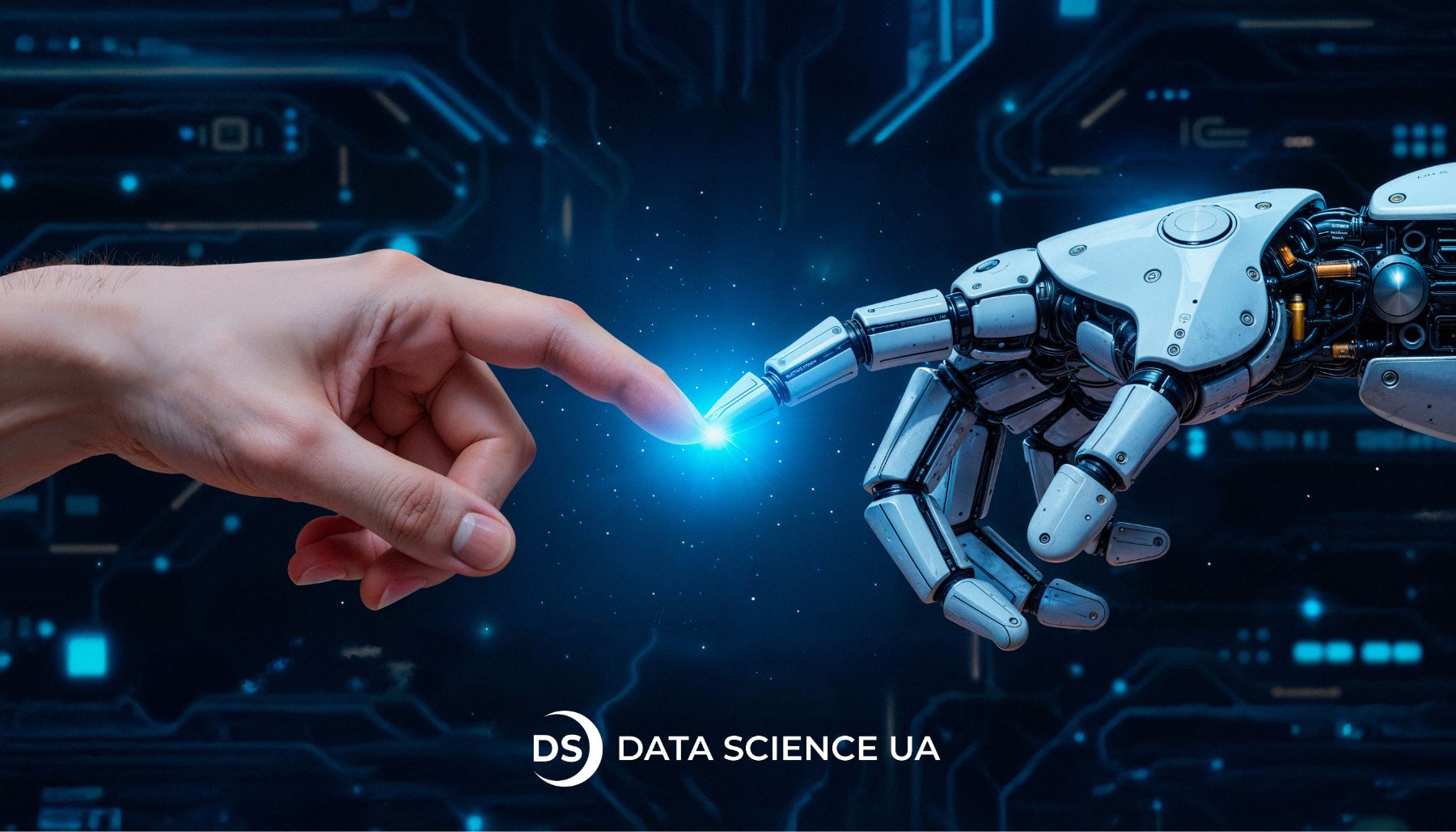What Is Machine Learning Infrastructure?
Machine learning infrastructure is the term used to describe the fundamental parts and systems that facilitate the creation, implementation, and upkeep of machine learning (ML) models. As enterprises increasingly rely on data-driven decision-making, a strong ML infrastructure is important for realizing the full potential of artificial intelligence. At Data Science UA we are proud to use this technology and implement ML infrastructure solutions for our clients. In our new article we will go over the essential components, advantages, difficulties, and best practices for creating efficient machine learning development infrastructure.
 Image from Pexels (source)
Image from Pexels (source)
Understanding Machine Learning Infrastructure
The Role and Significance of ML Infrastructure
The foundation of any organization’s machine learning efforts is its machine learning infrastructure. It includes everything from systems for training and deploying models to data processing and storage capabilities. ML infrastructure is important because it can improve data scientist collaboration, expedite the machine learning lifecycle, and make it easier to integrate models into business applications. Without a clear infrastructure, companies run the risk of running into ML workflow bottlenecks, which can cause delays and inefficiencies.
Core Elements of Machine Learning Infrastructure
The infrastructure for machine learning is made up of a number of essential parts that cooperate to make data processing, model creation, and deployment easier. Machine learning companies looking to develop or improve their machine learning capabilities have to understand these components. In addition to increasing productivity, a well-organized machine learning infrastructure frees up teams to concentrate on creativity rather than technical difficulties. Working with a respectable machine learning firm can give businesses the know-how and resources they need to improve or deploy their systems.
Defining Business Objectives for ML Applications
Before using machine learning solutions, organizations need to know what their business goals are. This process involves learning about the specific problems the ML application is trying to solve and how these solutions fit with the overall business goals.
By setting a clear goal, such as reducing stock outs by 20% within six months, the organization sets a clear benchmark for success. This goal helps in developing the machine learning model and measuring its impact on the business. By linking ML infrastructure to business outcomes, companies know it can align with their strategic priorities.
Conducting Exploratory Data Analysis (EDA)
One of the most important phases in the machine learning process is exploratory data analysis, or EDA. It enables data scientists to comprehend dataset distributions, spot trends, and find anomalies. Graphs, charts, and statistical summaries are used in EDA to visualize data and provide insights that support well-informed decision-making.
A financial institution might, for instance, examine consumer transaction data to find spending patterns that affect evaluations of credit risk. They may discover through EDA that particular demographic groupings have unique purchasing patterns, which can guide risk management or targeted marketing tactics. Organizations that invest time in EDA can find hidden insights that greatly improve the efficacy of eventual machine learning models, lowering the possibility of expensive errors later in the development process.
Developing and Engineering Features for ML Models
The quality of features affects the accuracy of machine learning models.
For example, in predicting house prices, features like square footage, location, and number of bedrooms must be designed to make the model more accurate. Also, features like the age of the property or how close it is to schools can give valuable information that improve accuracy. With carefully designing and engineering features and ml infra engineer work, organizations can significantly improve their models’ performance, which can lead to better decision-making and competitive advantages in their respective markets.
 Image from Pexels (source). Check out our data engineering services
Image from Pexels (source). Check out our data engineering services
Model Training and Hyperparameter Tuning
After gathering information and creating features, the model is ready to be trained. This phase involves choosing algorithms, training models on the dataset, and tweaking hyperparameters to make them work best. The type of algorithm you choose, like decision trees, neural networks, or support vector machines, depends on the problem and the data.
Evaluation Metrics and Experiment Tracking
Data scientists use various metrics to see how well a model is doing. For classification tasks, metrics like accuracy, precision and recall are common. The necessary metrics show how well the model is performing and where adjustments may be needed. Also, tools for keeping track of experiments are important for writing down the settings, settings, and results of experiments. This makes it easier to compare and replicate results. Tools like MLflow or DVC help teams keep track of different models and figure out what worked well and what didn’t. Organizations can make sure that their machine learning processes are transparent, which leads to better decisions and continuous improvement.
Automating the Training Process
Automation makes machine learning workflows more efficient. Tools such as AutoML can automatically select algorithms and tune hyperparameters, significantly reducing the time required for model development. Data scientists can focus on more complex tasks that require human intuition and creativity.
Continuous Monitoring and Model Health Checks
After installing the software, we keep checking to make sure it works as expected. It means keeping track of key performance indicators, checking for data drift, and checking the health of the model regularly.
For example, if a recommendation system suddenly stops working, monitoring can help figure out whether changes in user behavior or data quality are to blame. This constant monitoring helps to protect investments and build trust among users who rely on these systems for important insights and decisions.
Benefits of Machine Learning Infrastructure
There are many benefits for companies wishing to successfully use AI.
Easy to Implement and Use
The development, testing, and deployment of models are made simpler for teams by a well-designed machine learning infrastructure. Automated workflows and user-friendly interfaces can greatly lower the complexity of machine learning. For example, Vertex AI by Google. It’s an user-friendly platform for data management, model building, and streamlining the deployment of machine learning pipelines. It is most accessible to non-experts, thanks to its AutoML capabilities, which users with no deep ML expertise can leverage in model development, and because of this flexibility, it is an ideal choice for businesses looking to get started fast with AI.
With regard to high-performance capabilities, Vertex AI is able to take advantage of Google’s highly scaled cloud infrastructure and optimized hardware in the form of Tensor Processing Units (TPUs) for faster model training. The platform also allows large-scale deployments, thereby making it highly efficient at handling large data workloads. This enables businesses to hit faster model iterations and scale up easily.
High-Performance Capabilities
Machine learning infrastructure reflects the optimized software tools and powerful hardware that can handle big data and complex computations efficiently. In particular, such performance is very critical when it comes to training deep learning models, since this requires huge computational resources. Using high-performance infrastructure, organizations could achieve results faster, giving them room to iterate on models and react to market demands much quicker.
Cost-Effective Solutions
In this regard, the adoption of cloud-based tech is likely to cut costs related to maintaining physical hardware and infrastructure for an organization. Pay-as-you-go pricing models help businesses scale resources as needed, optimizing expenditure. The startup can start with minimal resources and scale up as they grow, without having to bear the financial burden of investing in infrastructure up-front.
Environmentally Sustainable Option
The use of such services would, therefore, enable the organization to take advantage of benefits offered by the machine learning infra while minimizing its carbon footprint. The commitment to sustainability enhances corporate responsibility but may also be in line with what environmentally conscious consumers prefer.
Broad Support for Popular ML Frameworks
Modern machine-learning infrastructure supports multiple frameworks, such as TensorFlow, PyTorch, or even Scikit-learn, which enables data scientists to use tools that fit their project requirements and thereby increase productivity and collaboration.
 Image from Pexels (source)
Image from Pexels (source)
Common Challenges in Machine Learning Infrastructure
While the benefits are substantial, there are also challenges involved in implementing ai ml infrastructure. Don’t be scared of it; if you are newbie in implementing this tech or just want to make sure you are on the right way – just reach out to our team and we provide you with data science consulting and development services!
Version Control and Data Management
Version management for datasets and models is an integral part of machine learning workflows. When done otherwise, without version control, reproducing results or tracing the provenance of models becomes hard for a team.
Effective Resource Management and Optimization
Optimal resource allocation avoids either over-provisioning or under-provisioning of resources. The organizations need to monitor the usage patterns and adjust their infrastructure accordingly in order to maximize the efficiency while minimizing the costs.
Monitoring Model Performance and Scalability
As user behavior and data evolve, models may require adjustments to maintain their performance. This, therefore, makes continuous monitoring very important in order to detect any degradation in model accuracy.
 Image from Pexels (source)
Image from Pexels (source)
Best Practices for Building Robust ML Infrastructure
You can follow these practices to ensure effective deep learning infrastructure.
Designing for Scalability and Flexibility
The hosting of future growth requires an infrastructure that is easily scalable. This includes the use of cloud services, where resources can be allocated on demand, and designing systems that will adapt to new requirements.
Optimizing Costs Across the Infrastructure
Cost optimization should be a continuous process. Organizations can maximize their investments in ml infra by regularly reviewing the usage of resources and looking for areas where they can cut costs.
Selecting the Right Tools and Technologies
It is important that the right tools and technologies are chosen for a machine learning project; an organization should look at its own needs and select tools that fit its goals, capabilities, and workflows.
Conclusion
What is ml infrastructure? Strong data processing systems, storage capacities, and scalable frameworks are all components of an effective technology that facilitates data scientist collaboration and supports machine learning operations. Important components of this infrastructure include feature engineering, exploratory data analysis, and hyperparameter tuning, all of which assist businesses in creating precise, useful models that support their objectives.
It enables businesses to optimize AI’s potential, improve operational effectiveness, and maintain flexibility in a data-driven environment. Corporations can use machine learning as a competitive advantage while maximizing costs and promoting sustainable growth by giving priority to flexibility, scalability, and security.
FAQ
How does machine learning infrastructure differ from traditional IT infrastructure?
First is specifically designed and put in place for the ml workflow needs. Traditional IT infrastructure has general computing needs and may not serve the high-performance demands required by machine learning.
What are some of the storage solutions in use by machine learning infrastructure?
Data storage approaches include cloud storage services such as AWS S3 or Google Cloud Storage, Data warehouses like Snowflake and BigQuery, and distributed file systems like HDFS. This is because these solutions can scale up to a high volume of data.
What are the basic steps for scaling machine learning infrastructure?
Organizations wishing to scale up in this tech should:
- Profile for performance and usage patterns to find hot spots.
- Use cloud services to scale resources dynamically.
- Scale storage and data processing.
- Use automated deployment and software updates using CI/CD pipelines.
- Constantly revisit and change tools and technologies based on changing requirements.




